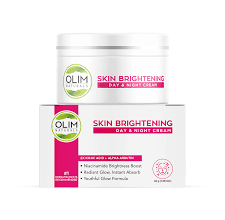Swapping Chemical-Laced Beauty Products for Safer Alternatives

For decades, many beauty products have been marketed as miracle solutions, promising smooth skin, vibrant color, and perfect hair. However, recent studies raise concerns about the potential health risks associated with some chemicals in these products.
These seemingly harmless potions may contain harmful ingredients. Transitioning to safer alternatives allows you to prioritize both beauty and well-being.
You can lower your exposure to dangerous toxins by selecting items that have natural or non-toxic components. Educate yourself to make informed choices about a healthy beauty regimen.
Hair Straighteners and Associated Lawsuits
For decades, beauty products have promised flawless results, but recent studies reveal potential health risks hidden within. Transitioning to safer alternatives prioritizes both beauty and well-being.
Chemical hair straighteners are a prime example of toxic beauty products. As per the Cleveland Clinic, a 2022 study linked frequent use to increased uterine cancer risk, sparking lawsuits against manufacturers for not warning consumers. The hair straightener lawsuit alleges that these companies knew or should have known about the risks but failed to disclose them.
TorHoerman Law highlights that thousands of women have joined the case, and the legal battle is ongoing. Consider heat styling tools with temperature control, or embrace your natural texture for a healthier approach.
Do all hair straighteners have formaldehyde?
Not all hair straighteners contain formaldehyde, but many keratin-based treatments do. Formaldehyde or its releasing agents are often used in these products to achieve long-lasting straightening results. It’s essential to check the product’s ingredients or consult with a professional to ensure safety.
Parabens and Sulfates in Skincare Products
Parabens and sulfates are common ingredients in skincare products, but concerns exist about their potential to irritate skin. Sulfates can remove natural oils from the skin, causing dryness, while parabens are preservatives that may interfere with hormones.
WebMD highlights that while the science of paraben safety is still debated, some people experience allergic reactions or skin irritation.
There’s no harm in opting for caution and exploring natural alternatives that utilize gentle cleansers and plant-based ingredients. Look for products labeled “paraben-free” and “sulfate-free” and consider switching to cleansing balms or micellar water for a gentler makeup removal experience.
Deodorant Dilemma
Healthline notes that deodorants are essential for daily hygiene, but aluminum, a common antiperspirant ingredient, raises questions. Research indicates that there could be a connection between aluminum and breast cancer. Aluminum-free deodorants offer a natural alternative that utilizes ingredients like baking soda and cornstarch to neutralize odor without potential health risks.
However, it’s worth noting that aluminum-free deodorants may not have the same sweat-blocking efficacy as typical antiperspirants. If you find aluminum-free options aren’t strong enough, consider switching to natural antiperspirants that use crystal deodorant or mineral salts.
What does deodorant with aluminum do?
Deodorants with aluminum compounds, like aluminum chlorohydrate, block sweat ducts to reduce perspiration. These compounds temporarily prevent sweat from reaching the skin’s surface, thereby reducing moisture and odor. Concerns about potential health risks have led some to opt for aluminum-free alternatives.
Avoiding Formaldehyde in Nail Care
Formaldehyde, a hardening agent found in some nail polishes, can cause respiratory issues and allergic reactions. Look for formaldehyde-free polishes that achieve long-lasting wear without compromising your health.
Explore natural nail care options that prioritize strengthening and nourishing your nails. While formaldehyde-free polishes may not last quite as long as traditional formulas, they are a safer option, especially for people who frequently get manicures.
The Cut recommends looking for polishes with labels like “3-free,” “5-free,” or “7-free” which indicate the absence of formaldehyde and other potentially harmful chemicals. Additionally, using a base coat and top coat can help extend the wear time of your polish.
What does 7-free nail polish mean?
“7-free” nail polish means it is free from seven harmful chemicals commonly found in conventional nail polishes. This includes formaldehyde, formaldehyde resin, toluene, dibutyl phthalate (DBP), camphor, ethyl tosylamide, and xylene. These ingredients are linked to health concerns. Opting for 7-free polish reduces exposure to these potential toxins.
Transitioning to safer beauty products is an empowering step towards holistic well-being. Individuals can enjoy beauty routines that enhance health rather than compromise it by choosing alternatives free from harmful chemicals. Understanding the ingredients and their effects is crucial for making informed choices.
This conscious approach not only protects personal health but also promotes a market shift towards more responsible and transparent beauty standards. Embracing natural textures, gentler skincare, and non-toxic products promotes a more sustainable and mindful beauty regimen. This aligns with a growing awareness of the interconnectedness of hea



